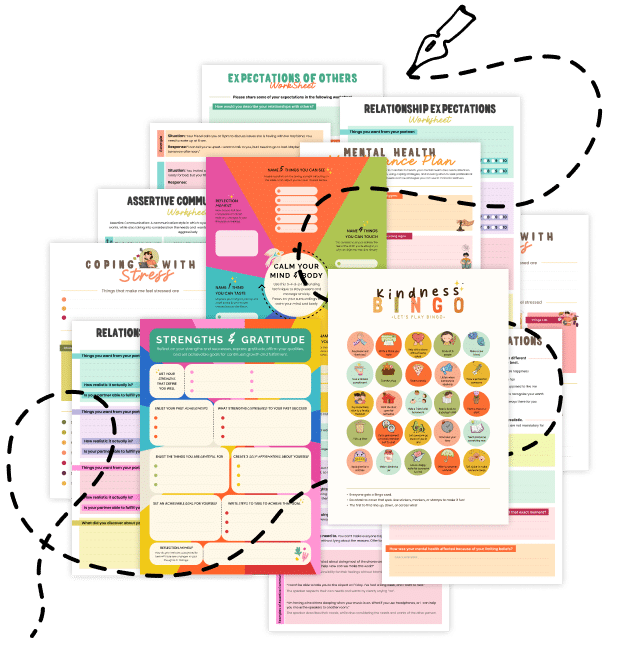20 Things You Should Know About Metaphor-Reframing
Enhance your cognitive flexibility and creative problem-solving with these 20 insights on Metaphor-Reframing—what it is, why it matters, and how you can transform challenges into opportunities by shifting your perspective with fresh, powerful metaphors.
1. What Is Metaphor-Reframing?
Metaphor-Reframing is the process of changing the way you conceptualize a problem or situation by using a new metaphor, allowing you to see things from a different, often more empowering, angle.
2. Shifting Perspectives
By replacing an old metaphor with a new one, you can break free from limiting thought patterns and reframe challenges in ways that open up creative solutions.
3. Enhancing Cognitive Flexibility
This technique helps you move beyond rigid thinking by encouraging you to view situations through multiple lenses, fostering adaptability in both personal and professional contexts.
4. A Tool for Creativity
Metaphor-Reframing can spark innovative ideas by connecting disparate concepts, often revealing surprising insights and alternative pathways.
5. Empowering Self-Reflection
Changing the metaphor you use to describe a problem can lead to deeper self-awareness, helping you understand and reconfigure your emotional responses.
6. Improving Communication
When you use fresh metaphors, you can communicate complex ideas more clearly and effectively, making it easier for others to understand your perspective.
7. Breaking Negative Patterns
Replacing negative or limiting metaphors with positive, growth-oriented ones can reduce self-doubt and enhance your overall mindset.
8. Practical Applications
From business challenges to personal dilemmas, metaphor-reframing can be applied in various scenarios to unlock new strategies and solutions.
9. Learning from Stories
Narratives and stories often carry metaphors; by reinterpreting them, you can gain insights that apply to your own life and work.
10. Emotional Resilience
Adopting empowering metaphors can build resilience, helping you navigate setbacks by seeing them as temporary hurdles rather than insurmountable obstacles.
11. Enhancing Problem-Solving
Metaphor-Reframing allows you to approach problems from a new angle, often revealing hidden connections and opportunities that were previously overlooked.
12. Fostering Innovation
By encouraging lateral thinking, this technique can inspire breakthrough ideas and creative approaches in team settings and individual projects.
13. Flexibility in Leadership
Leaders can use metaphor-reframing to inspire teams, realign strategies, and drive organizational change through fresh, relatable narratives.
14. Reducing Stress
Reframing stressful situations with empowering metaphors can help reduce anxiety and create a more manageable outlook on challenges.
15. A Strategy for Personal Growth
Viewing your experiences through different metaphors encourages continuous learning and self-improvement, leading to more fulfilling personal development.
16. Integration with Mindfulness
Combining metaphor-reframing with mindfulness practices can deepen your understanding of your thoughts and emotions, creating a more centered mindset.
17. Enhancing Learning Processes
Students and professionals alike can benefit from using metaphors to simplify complex concepts, making learning more engaging and memorable.
18. Promoting Adaptive Thinking
Regular practice of metaphor-reframing nurtures an adaptive mindset, preparing you to pivot quickly in dynamic environments.
19. Cultural Relevance
Metaphors can be culturally tailored, making them a powerful tool for communicating across diverse backgrounds and enhancing mutual understanding.
20. Related Topics to Explore
- Perspective Flexing – Learn how shifting your viewpoint can unlock new ideas.
- Cognitive Defusion – Discover techniques to detach from unhelpful thoughts and see challenges objectively.
- Reframing Failure as Data – Transform setbacks into valuable learning opportunities.
- Metacognitive Monitoring – Enhance your awareness of your own thought processes for improved decision-making.
- Adaptive Confidence – Build self-assurance through continuous learning and positive reframing.
Quick Tips to Boost Your Metaphor-Reframing
- Identify Limiting Metaphors: Reflect on the language you use to describe challenges and notice any negative or restrictive metaphors.
- Experiment with New Analogies: Actively seek out alternative metaphors that cast your problems in a more positive or dynamic light.
- Use Visual Aids: Draw or visualize your metaphors to deepen your understanding and solidify the new perspective.
- Discuss with Others: Share your reframed ideas with peers or mentors to gain further insights and refine your new metaphor.
- Practice Regularly: Incorporate metaphor-reframing into your daily routine to continuously challenge and evolve your mindset.
Embrace these insights and tips to harness the transformative power of Metaphor-Reframing, opening new pathways to creativity, resilience, and success in all areas of your life!


